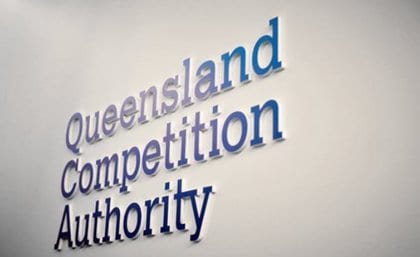This year’s smoke and mirrors performance by the Queensland utility players looks set to unleash a major backlash from businesses, small and large.
Whilst residential customers who consume over sixteen kilowatt-hours a day get some relief this year, businesses are facing an explosion in costs by either being switched to demand tariff and/or seeing huge jumps in demand charges. In addition to this, all customers residential and business now face up-front costs for all of the network equipment and services that were formally provided under the network charges portion of the bill.
Queensland has always been a bit slow to change, and up until July this year, charged business according to the kilowatt hours measured, ignoring the power factor and therefore the efficiency of the equipment at a business.
Most other states have been charging for KVa or the “real” power consumed for years, encouraging business to ensure their electrical equipment is as efficient as possible, or installing supplementary gear to correct these problems, reducing the cost of supply.
 Given notice by the distributors, many businesses have been pro-active in seeking both power factor correction and solar solutions to fend off imminent cost rises, these however have been few and most now face the inevitable shock of a much larger bill that is not a once off, but a sure sign of the future.
Given notice by the distributors, many businesses have been pro-active in seeking both power factor correction and solar solutions to fend off imminent cost rises, these however have been few and most now face the inevitable shock of a much larger bill that is not a once off, but a sure sign of the future.
To add to the confusion, many retailers still have not finalized their billing methodology for these new readings, and in some cases seem to be simply loading the kilowatt hour charge with a premium to build in an assumed power factor for a customer, still apparently ignoring the actual Kilowatt vs Kilovolt-Ampere differential.
The Queensland Competition Authority, in its determination assumed a power factor of .873988 as a basis for “Kva” equivalent charge, or a fourteen per cent increase. Many retailers have published a new “KWh equivalent” rate of twenty-eight cents per kilowatt hour, so the question is, if a business has invested to ensure their electrical equipment is highly efficient, that is have a power factor at or near unity, will they be charged the standard twenty-two cents KWh rate or the new created and inflated “KWh equivalent rate”. We have asked a couple of retailers for clarification and at this point they cannot provide an answer.
It seems nigh on impossible to approach a business customer with power factor, BMS and solar solutions when even the retailers don’t know how this new raft of charging will be implemented and if in fact it will be as specific and accurate as it should be.
All we can be certain of is this, while the QCA says overall business will see reductions, many will see huge increases by virtue of the new demand and power factor regime. With one hundred and fourteen pages of numbers, opinions and assertions, how are we ever going to be able to discover the real costs of this most basic of services and ensure we aren’t paying for stuff we don’t want or need.
Rob Campbell is CEO of Vulcan Energy










